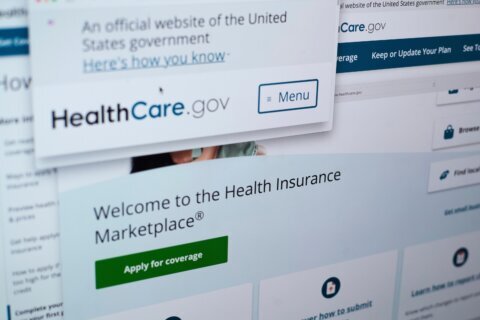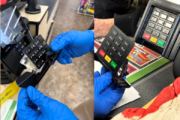Gathering printed copies of important paperwork is best done before the information is actually needed, and September, being National Preparedness Month, is a good time to get started.
You should have a hard copies of insurance, prescriptions and identification documents in case they get damaged or destroyed.
“In particular, how to contact your insurance company because in the middle of an emergency, you may not have ready access to the internet, and it might be very chaotic,” said MaryAnn Tierney, the Regional Administrator for Federal Emergency Management Agency Region 3, which includes Virginia, West Virginia, D.C., Delaware, Pennsylvania and Maryland.
“Having that important insurance contact information is really critical. And having a copy of that is key to being on the road to recovery faster,” she said.
Stashing something, such as a utility bill, in the paperwork can establish proof of residence if you have to evacuate.
Tierney said present threats in the D.C. area are severe weather, including high winds, rainfall, flooding, hurricanes and the consequences associated with that, such as power outages and clogged transportation routes.
It helps to have a plan ahead of time if an order comes to evacuate.
How are you going to get where you’re going? Mass transit or a personal vehicle? Where will you end up? Will you have to go to a shelter? Will you stay with friends and family? Will you stay at a hotel?
“And then you need to think about the route you will take to get from where you are — your house or your place of work — to that destination,” Tierney said.
Do you have flood insurance?
“If it rains in your community, it can flood in your community,” Tierney said.
There are two types of emergency preparedness kits you should think about that’s stocked and ready for use — one for sheltering in place and another if you have to go.
Tierney said to-go kits packed in something light and portable, such as a backpack, should have some water, copies of prescriptions, medications, granola bars, a change of clothes, rain gear and comfortable shoes.
A kit stocked for use at home should have several days’ supply of food and water for you, your family and pets.
A FEMA list of other essential items includes prescription medications, a first aid kit, local maps, a manual can opener, a battery-powered radio, a wrench or pliers, a whistle in case you need to call for help, and a flashlight with batteries.
“Batteries not inside the flashlight — taped to the flashlight, so that they don’t run down while they’re sitting in the flashlight,” she said.
WTOP has a checklist of what to have available in your car, what to do around the house if bad weather is in the forecast, and phone numbers to area power and cable companies.
Another message related to preparedness is to be a good neighbor.
“There are first responders and they are going to respond. But your neighbor is typically the first responder to you in an emergency,” Tierney said.
Numbers of localities have community emergency response team (CERT) programs.
“Research that. Get involved because when disaster strikes. You are likely going to be the first people that help each other,” Tierney said
Tierney also encourages everyone to download the FEMA app to receive tips and alerts.








